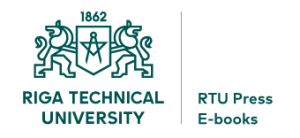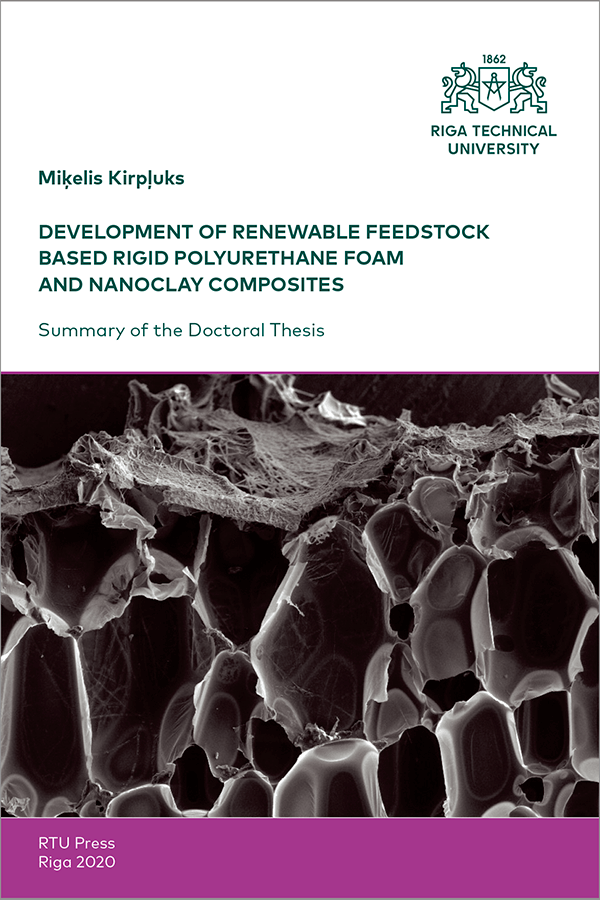Development of Renewable Feedstock Based Rigid Polyurethane Foam and Nanoclay Composites
Summary of the Doctoral Thesis
Miķelis Kirpļuks, Riga Technical University, Latvia
Rigid PU foams are versatile material commonly applied as a thermal insulation material. It can be applied as an impact absorption material in the automotive industry if material with sufficient mechanical properties has been developed. Further increase in mechanical properties can be achieved by developing nano-reinforced rigid PU foams.
Majority of commercially used rigid PU foams are produced from non-renewable petrochemical-based raw materials. Although, renewable feedstock, as well as recycled materials, can be used to obtain rigid PU foams with equal properties. In this work, several bio-based, as well as APP polyols, have been used to develop rigid PU foams.
Rigid PU foam thermal insulation material has to fulfil demanding flammability requirements. This is achieved by the introduction of different flame retardants into the material structure from which most common are halogenated flame retardants. Halogenated flame retardants are associated with different health hazards, thus their phase-out from the market can be expected. A good alternative to halogenated flame retardants are intumescent flame retardant solutions.
The results and discussion of this thesis are divided into three parts:
Part 1 describes the development of high-density rigid PU foam material for application as impact absorption material in the automotive industry. Sustainable origin polyols have been used to develop rigid PU foams and their influence on mechanical, thermal and morphological properties of the material has been studied. To further increase mechanical properties of the rigid PU foams a nano-composite with montmorillonite nano-clay was developed. Lastly, most optimal rigid PU foam formulations were upscaled to produce real scale automotive part, which was tested according to the European Union’s crash test requirements.
Part 2 describes the development of rigid PU foam thermal insulation from bio-based polyols. Halogenated flame retardants were replaced using non-halogenated alternatives. Intumescent flame retardants, such as expandable graphite was used to significantly reduce the flammability of the rigid PU foam.
Part 3; during high-density rigid PU foam development it was discovered that used bio-based polyols have too low OH group functionality. Thus, the functionality of the polyols was increased by developing different bio-polyol synthesis method. Rapeseed oil, as well as tall oil, were used as feedstock for high functionality bio-based polyol synthesis. The first step was an epoxidation of the unsaturated moieties of the bio-based oils. Afterwards, oxirane ring opening with different polyfunctional alcohols and simultaneous transesterification/esterification reactions were used to obtain desired polyol structures.
Additional information
| DOI | |
|---|---|
| Publication type | |
| Hyperlink | |
| Defence date | 03.09.2020. |
| ISBN (print) | 978-9934-22-469-0 |
| ISBN (pdf) | 978-9934-22-470-6 |
| Format | |
| Pages | 64 |
| Published online | |
| Publisher | RTU Press |
| Country of Publication | Latvia |
| Publication language |
You must be logged in to post a review.




Reviews
There are no reviews yet.